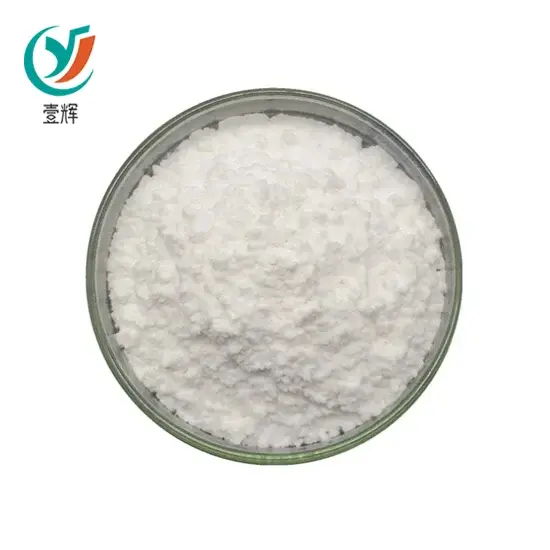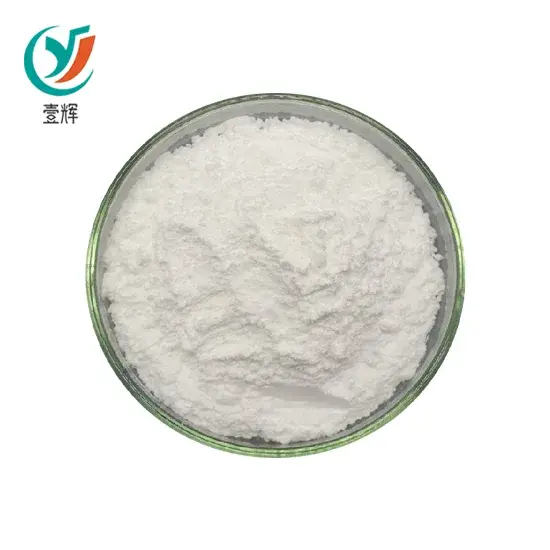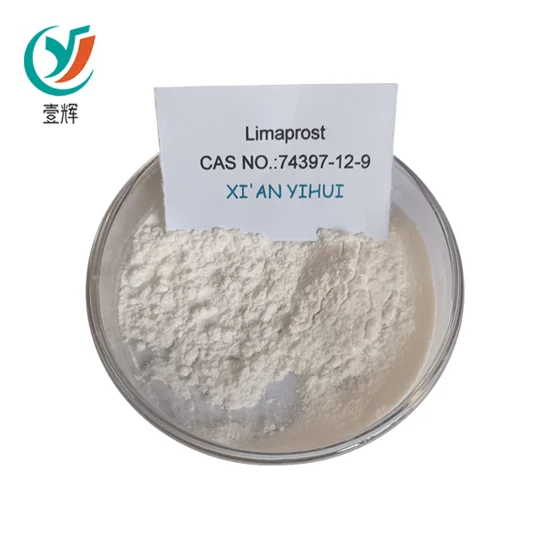What Is The Other Meaning Of Inhibitor?
2024-05-06 10:03:59
What is the other meaning of inhibitor?
The term "inhibitor" is commonly used in various fields, such as chemistry, biology, and medicine. In these disciplines, an inhibitor refers to a substance or agent that hinders or restricts a particular process or activity. However, aside from this widely known definition, the term "inhibitor" can also have other meanings, depending on the context in which it is used. In this article, we will explore some of these alternative meanings of the term "inhibitor" and discuss their significance.

Inhibitor as a Social Concept
In a social context, the term "inhibitor" can refer to a person or factor that restrains or suppresses certain behaviors or actions within a group or community. In this sense, an inhibitor can be an individual who discourages or prevents others from expressing their true selves or engaging in certain activities. This inhibition can arise from societal norms, cultural expectations, or personal beliefs.
For example, in some conservative societies, individuals may act as inhibitors by imposing strict moral codes or traditional values, which can inhibit personal expression and freedom. Similarly, peer pressure within certain social circles can also act as an inhibitor, constraining individuals from diverging from the group''s norms or engaging in activities deemed unacceptable.
It is important to note that while inhibitors in a social context can sometimes hinder personal growth and individuality, they can also serve as a necessary check on behavior that is harmful to oneself or others. For instance, societal inhibitors against violence and illegal activities help maintain law and order, ensuring the overall well-being and safety of the community.
Inhibitor in Psychology
In the field of psychology, the term "inhibitor" is often used to describe a psychological mechanism that hampers or restricts certain thoughts, emotions, or behaviors. Psychological inhibitors can manifest in various ways and can be both conscious and subconscious.
One of the well-known psychological inhibitors is the phenomenon of repression. Repression occurs when an individual suppresses distressing or traumatic memories, thoughts, or emotions into the unconscious mind. This process is believed to be a defense mechanism aimed at protecting the individual from psychological harm.
Another psychological inhibitor is self-doubt. When someone experiences self-doubt, they may inhibit their own abilities or potential due to a lack of confidence or fear of failure. This inhibition can limit personal growth, prevent individuals from taking risks, and hinder their achievements.
Inhibitors can also exist at the societal level, shaping collective behavior patterns. For example, social norms and expectations can inhibit the expression of certain emotions or the pursuit of unconventional careers, ultimately impacting individual well-being and societal progress.
Inhibitor in Technology and Engineering
In the fields of technology and engineering, the term "inhibitor" takes on a different meaning altogether. In these contexts, an inhibitor can refer to a substance or agent that is deliberately introduced into a system to limit or prevent a specific chemical reaction, corrosion, or other undesirable processes.
Corrosion inhibitors, for instance, are chemicals that are added to metals or alloys to slow down or prevent the degradation of the material due to corrosion. These inhibitors work by forming a protective layer on the surface of the metal, which acts as a barrier against environmental factors that would otherwise cause corrosion.
Similarly, in the field of pharmacology, an enzyme inhibitor is a molecule that binds to an enzyme, preventing it from catalyzing a specific reaction. This inhibition can be beneficial in various medical treatments, as it can regulate enzymatic activity and help alleviate certain conditions or diseases.
In technology and engineering, the use of inhibitors helps enhance the durability and performance of materials and systems. By inhibiting undesired reactions or processes, inhibitors contribute to the overall efficiency and reliability of various technological applications.

Conclusion
In summary, the term "inhibitor" encompasses different meanings depending on the context in which it is used. Beyond its well-known definition in chemistry, an inhibitor can also refer to social factors or individuals that restrain certain behaviors or actions. Additionally, in psychology, inhibitors can manifest as psychological mechanisms that impede thoughts, emotions, or behaviors. In technology and engineering, inhibitors are substances or agents deliberately introduced to limit or prevent undesired reactions or processes. Understanding these alternative meanings of the term "inhibitor" allows us to appreciate its diverse applications in different fields and its impact on various aspects of our lives.
Inhibitor Product List:
CAS NO. | Products Name | CAS NO. | Products Name |
PI3K // mTOR | Protein Tyrosine Kinase | ||
1166227-08-2 | A66 | 656247-17-5 | Nintedanib |
1217486-61-7 | BYL719 | 1206799-15-6 | Ly2801653(merestinib) |
1246560-33-7 | VS-5584 (SB2343) | 184475-35-2 | gefitinib |
1201438-56-3 | IPI-145 (INK1197) | 183321-74-6 | erlotinib |
1009298-09-2 | AZD8055 | 1374640-70-6 | Co1686 |
870281-82-6 | CAL-101 (Idelalisib, GS-1101) | 1029044-16-3 | PLX3397 |
1173900-33-8 | AZD6482 | 1353550-13-6 | Olmutinib |
1276105-89-5 | CNX-1351 | 761439-42-3 | Nvp-tae684 |
663619-89-4 | TGX221 | 417716-92-8 | Lenvatinib (E7080) |
1372540-25-4 | GSK2636771 | 231277-92-2 | Lapatinib |
957054-30-7 | GDC0941 | 183319-69-9 | Erlotinib Hcl |
1086062-66-9 | GSK2126458(GSK458) | 877399-52-5 | Crizotinib |
1144068-46-1 | WYE125132(WYE-132) | 953769-46-5 | BLZ945 |
53123-88-9 | Rapamicin(sirolimus ) | 850140-73-7 | BIBW-2992 |
593960-11-3 | PIK93 | 811803-05-1 | Apatinib |
1345675-02-6 | ETP46464 | 1173699-31-4 | AMG337 |
1276110-06-5 | HS-173 | 1421373-65-0 | AZD9291 |
956958-53-5 | XL147 | 755037-03-7 | Regorafenib (BAY 73-4506) |
1032754-81-6 | GNE477 | 366017-09-6 | MUBRITINIB (Free base) |
1251156-08-7 | XL388 | 849217-68-1 | Cabozantinib |
1159824-67-5 | CZC24832 | 439081-18-2 | Afatinib (BIBW 2992) |
677297-51-7 | TG100-115 | 257933-82-7 | Pelitinib |
371935-74-9 | PI-103 | 228559-41-9 | ki8751 |
944396-07-0 | BKM120 (NVP-BKM120, Buparlisib) | 1022150-57-7 | SGX-523 |
914913-88-5 | Palomid 529 (P529) | 839706-07-9 | GNF-7 |
159351-69-6 | Everolimus (RAD001) | 796967-16-3 | ABT-869 |
936890-98-1 | OSI027 | 698387-09-6 | Neratinib |
162635-04-3 | Temsirolimus(CCI-779) | 1213269-23-8 | WZ4002 |
677338-12-4 | PIK-90 | 319460-85-0 | Axitinib |
955977-50-1 | PI-3065 | 10537-47-0 | Tyrphostin 9 |
870281-34-8 | Acalisib (GS-9820) | 504433-23-2 | GW441756 |
221877-54-9 | Zotarolimus(ABT-578) | 778277-15-9 | GNF-5 |
572924-54-0 | Deforolimus | 778270-11-4 | GNF-2 |
934526-89-3 | Pilaralisib (XL147) | 1033769-28-6 | GNF 5837 |
755038-65-4 | Volasertib(BI6727) | 118409-57-7 | AG18 |
1620576-64-8 | AZD8835 | 153436-53-4 | AG-1478 |
1627494-13-6 | AZD8186 | 870483-87-7 | GW2580 |
1608125-21-8 | AMG319 | 690206-97-4 | ZM306416 |
1276553-09-3 | PF-4989216 | 926037-48-1 | Radotinib (IY-5511) |
866405-64-3 | BML-275 | 943319-70-8 | Ponatinib(AP24534) |
1228013-30-6 | CC-223 | 937263-43-9 | 6-diaMine |
1032568-63-0 | BAY80-6946 (Copanlisib) | 610798-31-7 | Icotinib |
1382979-44-3 | GDC0084 | 1626387-80-1 | AZD3759 |
1386874-06-1 | LY3023414 | 194423-15-9 | PD168393 |
1232221-74-7 | APY0201 | ||
Microbiology | |||
Akt // GSK-3 | 376348-65-1 | Maraviroc | |
1207360-89-1 | GDC-0349 | 379270-37-8 | GS-7340 |
1009298-59-2 | AZD2014 | 1051375-16-6 | Dolutegravir |
1223001-51-1 | Torin 2 | 244767-67-7 | Dapivirine,TMC-120 |
1032754-93-0 | GDC-0980 (RG7422) | 1246529-32-7 | MPI-0479605 |
1013101-36-4 | PF-04691502 | 1037624-75-1 | R428 (BGB324) |
1349796-36-6 | SAR245409 (XL765) | 1538604-68-0 | BLU-9931 |
915019-65-7 | BEZ235 (NVP-BEZ235, Dactolisib) | 1421373-98-9 | AZ5104 |
35943-35-2 | Triciribine | 1234015-52-1 | LY2606368 |
937174-76-0 | GSK690693 | 1435488-37-1 | XMD17-109 |
612487-72-6 | AZD1080 | 1168091-68-6 | GDC-0623 |
1001264-89-6 | Ipatasertib (GDC-0068) | 1254473-64-7 | LY2874455 |
1047634-63-8 | Afuresertib (GSK2110183) | ||
603288-22-8 | LY2090314 | DNA Damage | |
865854-05-3 | Tideglusib | 459868-92-9 | PF-01367338 |
188011-69-0 | Bikinin | 1232410-49-9 | VE-821 |
142273-20-9 | Kenpaullone | 1038915-60-4 | MK-4827 |
1282512-48-4 | GDC-0032 | 912444-00-9 | ABT-888 2HCl(Veliparib) |
667463-85-6 | BIO-acetoxime | 1228013-15-7 | CC-115 |
1402608-02-9 | BAY1125976 | 763113-22-0 | Olaparib |
1800070-77-2 | Borussertib | 313516-66-4 | T0070907 |
76086-99-2 | SU 4942 | 925701-49-1 | KU-60019 |
1262414-04-9 | Abediterol | 22978-25-2 | GW9662 |
1226781-44-7 | Omarigliptin (MK-3102) | 1380672-07-0 | G007-LK |
1374639-75-4 | LEE011 (succinate) | 905973-89-9 | CGK 733 |
864821-90-9 | Eluxadoline | 896705-16-1 | BMH-21 |
1421373-66-1 | AZD-9291 (Mesylate) | 348086-71-5 | BAY-57-1293 |
1816307-67-1 | Sulfatinib(HMPL-012) | ||
1393466-87-9 | PLX8394 | JAK | |
891494-64-7 | MK-8776 | 331244-89-4 | BAM7 |
443913-73-3 | Vandetanib | 852808-04-9 | ABT737 |
1377049-84-7 | Velpatasvir | 941678-49-5 | Ruxolitinib |
334969-03-8 | Recilisib sodium salt | 803712-79-0 | Obatoclax Mesylate |
366789-02-8 | Rivaroxaban | 1337531-36-8 | GSK2606414 (Free base) |
1201902-80-8 | MLN9708 | 1448428-04-3 | Selonsertib |
1072833-77-2 | MLN2238 | 939981-39-2 | RG7112 |
159752-10-0 | MK-677 | 1257044-40-8 | ABT-199 |
1194044-20-6 | LY 2811376 | ||
439239-90-4 | Lasmiditan | ATM // ATR | |
136831-49-7 | TYRPHOSTIN RG 14620 | 1032350-13-2 | MK2206 |
125697-91-8 | lavendustin B | 587871-26-9 | KU-55933 (ATM Kinase Inhibitor) |
125697-92-9 | lavendustin A | 1352226-88-0 | AZD6738 |
1821428-35-6 | AZD0156 | ||
Epigenetics | |||
149647-78-9 | Vorinostat (SAHA) | ||
1105698-15-4 | Salermide | ||
1627676-59-8 | PFI-2 HCl | ||
404950-80-7 | Panobinostat | ||
1793053-37-8 | LLY-507 | ||
1346574-57-9 | GSK126 | ||
1403254-99-8 | EPZ6438 | ||
1012054-59-9 | CUDC-101 | ||
1316215-12-9 | ACY-241 | ||
1801787-56-3 | OICR-9429 | ||
49843-98-3 | 6-chloro-2,3,4,9-tetrahydro-1H-carbazole-1-carboxamide | ||
120964-45-6 | 3-deazaneplanocin A hydrochloride | ||
1338466-77-5 | EPZ004777 | ||
1561178-17-3 | SGC0946 | ||
1622921-15-6 | Remodelin HBr | ||
1620401-82-2 | UNC0379 | ||
287383-59-9 | Scriptaid (GCK10266) | ||
1044870-39-4 | RVX-208 | ||
1450655-76-1 | CPI-169 | ||
1260907-17-2 | GSK 525762A | ||
1314890-29-3 | TMP269 | ||
1011557-82-6 | Tenovin-6 | ||
929016-96-6 | SB 939 | ||
48208-26-0 | RG108 | ||
1403783-31-2 | Nexturastat A | ||
1395084-25-9 | MS436 | ||
852475-26-4 | MC1568 | ||
1619994-68-1 | GSK2801 | ||
112522-64-2 | CI-994 | ||
1418033-25-6 | LMK-235 | ||
1415800-43-9 | UNC1215 | ||
1687736-54-4 | SGC707 | ||
1215493-56-3 | RG2833 | ||
414864-00-9 | Belinostat (PXD101) | ||
1819363-80-8 | PFI-3 | ||
950762-95-5 | PCI-34051 | ||
202590-98-5 | OTX-015 | ||
1831110-54-3 | MS023 | ||
192441-08-0 | Lomeguatrib | ||
1616391-87-7 | GSK591 (EPZ-015866) | ||
1616391-65-1 | EPZ015666 | ||
130929-57-6 | Entacapone | ||
1446144-04-2 | CPI-203 | ||
1477949-42-0 | CAY10683 | ||
1440209-96-0 | BRD73954 | ||
1143532-39-1 | AZD5363 | ||
141732-76-5 | Exenatide Acetate | ||
1365970-03-1 | Glecaprevir | ||
1474034-05-3 | RTA-408 | ||
1353900-92-1 | ABT-530 |
if you have any demands, pls feel free to contact us any time. we will reply you asap.
our contact information:
E-mail: sales@yihuipharm.com
Tel: 0086-29-89695240
WeChat or WhatsApp: 0086-17792415937
Send Inquiry
Related Industry Knowledge
- How Dihydromyricetin Supports Liver Health
- Using Pyrantel Pamoate for Pinworm Treatment
- Can phosphatidylserine for sleep?
- Can phosphatidylserine cause hair loss?
- What Is Quercetin Dihydrate Used For?
- What is the difference between vitamin k2 mk7 and mk4
- Does acitretin cause weight gain?
- Is brimonidine tartrate safe for eyes?
- What Are the Potential Health Benefits of Dihydromyricetin?
- Is Doxorubicin Hydrochloride Solubility in Dmf?









